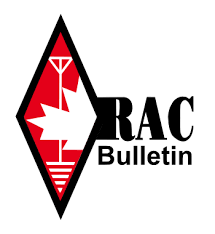RAC Ontario Sections Bulletin for September 16, 2023
Official Bulletin Station for Radio Amateurs of Canada with this week’s bulletin.
NATIONAL/INTERNATIONAL NEWS
1. Simulated Emergency Test 2023: “Operation Dark Skies”
The Simulated Emergency Test (SET) is a Canada-wide exercise in emergency communications,
which is administered by Radio Amateurs of Canada’s Community Services Officer and
Section Managers. This year ‘s event is known as “Operation Dark Skies” and will be held in
two parts as described below.
Operation Dark Skies: Part 1 – Saturday, October 14
Part 1 of the SET will be held for five hours on October 14, 2023, including the solar eclipse.
The objective is to gather information on Amateur operations before, during and after the event.
All data will be reviewed for future planning of emergency events.
Radio Amateurs of Canada is looking to engage as many operators as possible and utilize
all bands and modes.
For more information, check out the article on the RAC website
— Jason Tremblay, VE3JXT, RAC Community Services Officer
Operation Dark Skies: Part 2 – Monday, October 16
Part 2 of the Simulated Emergency Test will be held on Monday, October 16 in partnership
with Niagara Regional Emergency Management and the Niagara’s Community Emergency
Response Team.
Radio Amateurs of Canada is looking for three teams to set up staging areas for the SET and teams
that are willing to deploy for both operational and demonstration purposes for
Emergency Management officials.
More details will be available at the training sessions which will be held on September 22, 23 and 25
at 7 pm Eastern. Please contact [email protected] to register.
SET Reporting will not be done this year so please attend the training sessions for more information
on the reporting procedures.
— Jason Tremblay, VE3JXT, RAC Community Services Officer
2. Hurricane Ian to impact Atlantic Canada this weekend.
According to the hurricane track page at Environment Canada the centre of hurricane Ian will arrive
in Nova Scotia as a post-tropical storm at 1500 local on Saturday with winds of 110 km/h,
tracking north east into New Brunswick with winds dropping to 85 km/h. The projected path
will take it across the Gulf of St. Lawrence to the Northern Peninsula of Newfoundland by 2100 local
on Sunday with winds of 75 k/h.
Updated information is available at: https://weather.gc.ca/hurricane/track_e.html
— Environment Canada
ONTARIO SECTION NEWS
ITEMS OF INTEREST
3. Calling All Amateurs: We Need Your Help During Solar Eclipses!
Members of the Ham Radio Science Citizen Investigation (HamSCI) will be making radio contacts
during the 2023 and 2024 North American eclipses, probing the Earth’s ionosphere. It will be a fun,
friendly event with a competitive element – and you’re invited to participate.
Both amateur and professional broadcasters have been sending and receiving radio signals around
the Earth for over a century. Such communication is possible due to interactions between our Sun
and the ionosphere, the ionized region located roughly 80 to 1000 km overhead.
The upcoming eclipses (October 14, 2023, and April 8, 2024) provide unique opportunities to
study these interactions. As you and other HamSCI members transmit, receive, and record signals
across the radio spectrum during the eclipse, you will create valuable data to test computer models
of the ionosphere.
For more information, go to https://hamsci.org/festivals-eclipse-ionospheric-science
More about solar eclipses:
https://solarsystem.nasa.gov/eclipses/home/
— RAC website
4. Wi-Fi 7: The Next Big Leap Or A Whole Lotta Nothing?
For most people, the Wi-Fi hardware of today provides a perfectly satisfactory user experience.
However, technology is ever-evolving, and as always, the next advancement is already around the
corner. Enter Wi-Fi 7: a new standard that is set to redefine the boundaries of speed, efficiency,
and connection reliability.
Wi-Fi 7 is recognized in the official naming convention as IEEE 802.11be. It’s headline feature is
speed. Wi-Fi 7 is expected to provide speeds up to up to 46,120 Mbit/s. That’s over four times
faster than Wi-Fi 6 and 6E, or over 4,000 times faster than 802.11b, the first Wi-Fi standard the
world fell in love with. Wi-Fi 7 is also engineered with advanced features to combat latency, bolster
capacity, and enhance stability and efficiency. And while it will be backward compatible, like prior
Wi-Fi standards, unlocking its full potential will require users to upgrade their devices.
Both standards utilize the same frequency bands: 2.4 GHz, 5 GHz, and 6 GHz. Yet, Wi-Fi 7
boasts some distinct enhancements.
– Hackaday https://hackaday.com/2023/09/11/wi-fi-7-the-next-big-leap-or-a-whole-lotta-nothing/
This concludes this week’s bulletin.
Bulletin sent from Official Bulletin Manager VA3PC
RAC Ontario Sections Bulletin for September 16, 2023

